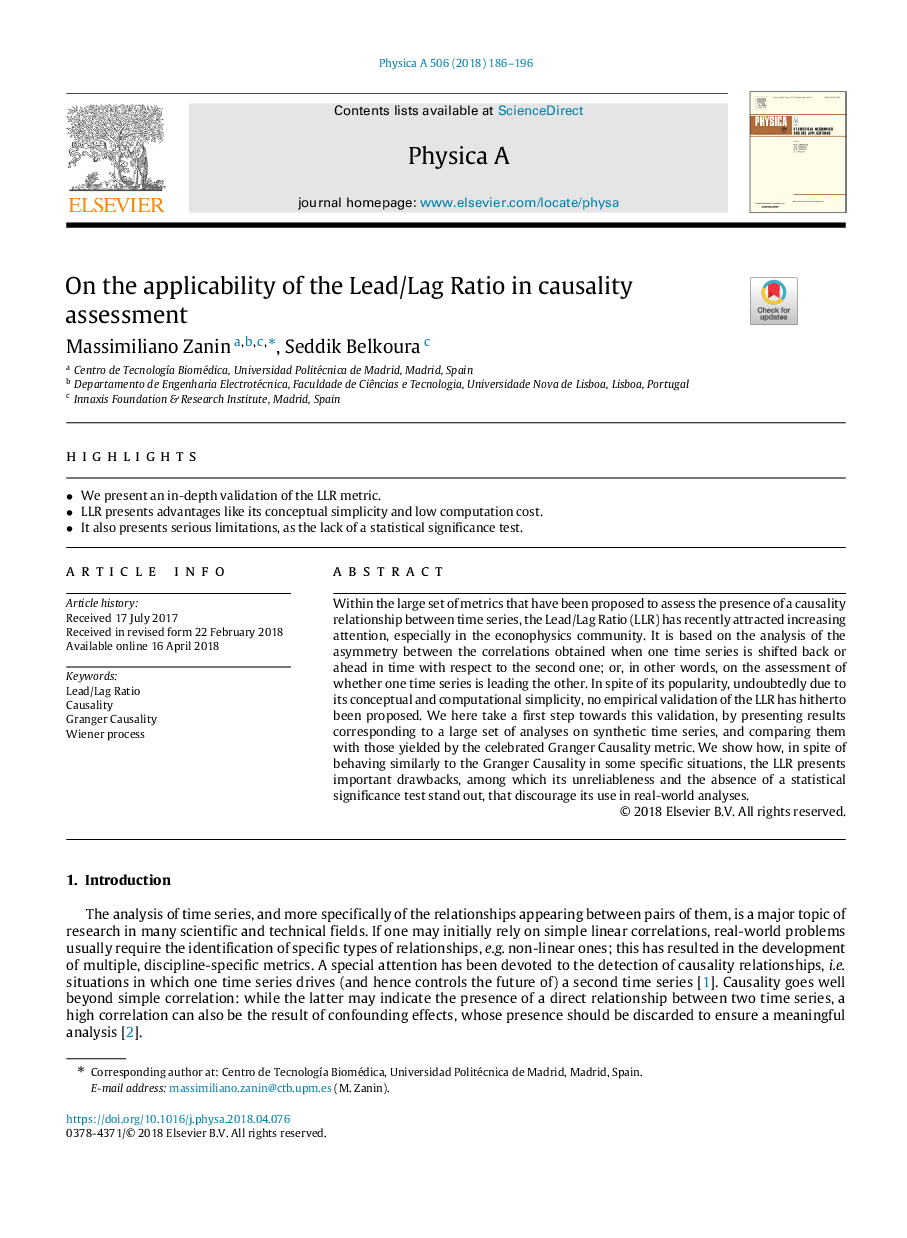| Article ID | Journal | Published Year | Pages | File Type |
|---|---|---|---|---|
| 7375114 | Physica A: Statistical Mechanics and its Applications | 2018 | 11 Pages |
Abstract
Within the large set of metrics that have been proposed to assess the presence of a causality relationship between time series, the Lead/Lag Ratio (LLR) has recently attracted increasing attention, especially in the econophysics community. It is based on the analysis of the asymmetry between the correlations obtained when one time series is shifted back or ahead in time with respect to the second one; or, in other words, on the assessment of whether one time series is leading the other. In spite of its popularity, undoubtedly due to its conceptual and computational simplicity, no empirical validation of the LLR has hitherto been proposed. We here take a first step towards this validation, by presenting results corresponding to a large set of analyses on synthetic time series, and comparing them with those yielded by the celebrated Granger Causality metric. We show how, in spite of behaving similarly to the Granger Causality in some specific situations, the LLR presents important drawbacks, among which its unreliableness and the absence of a statistical significance test stand out, that discourage its use in real-world analyses.
Related Topics
Physical Sciences and Engineering
Mathematics
Mathematical Physics
Authors
Massimiliano Zanin, Seddik Belkoura,
